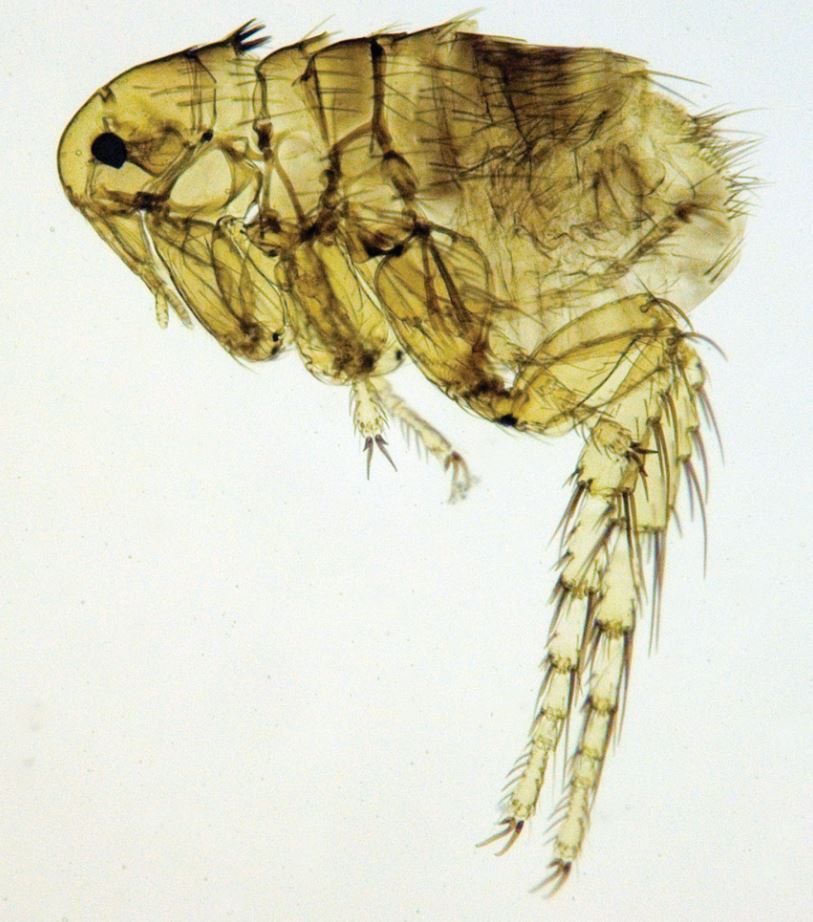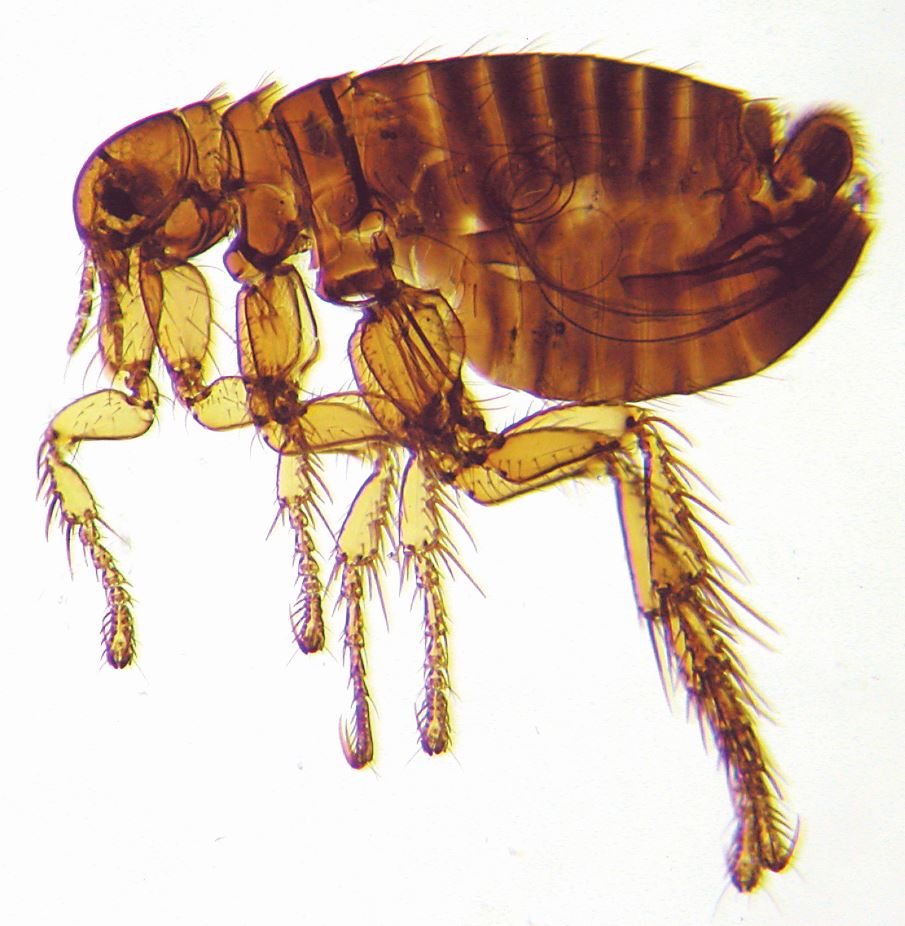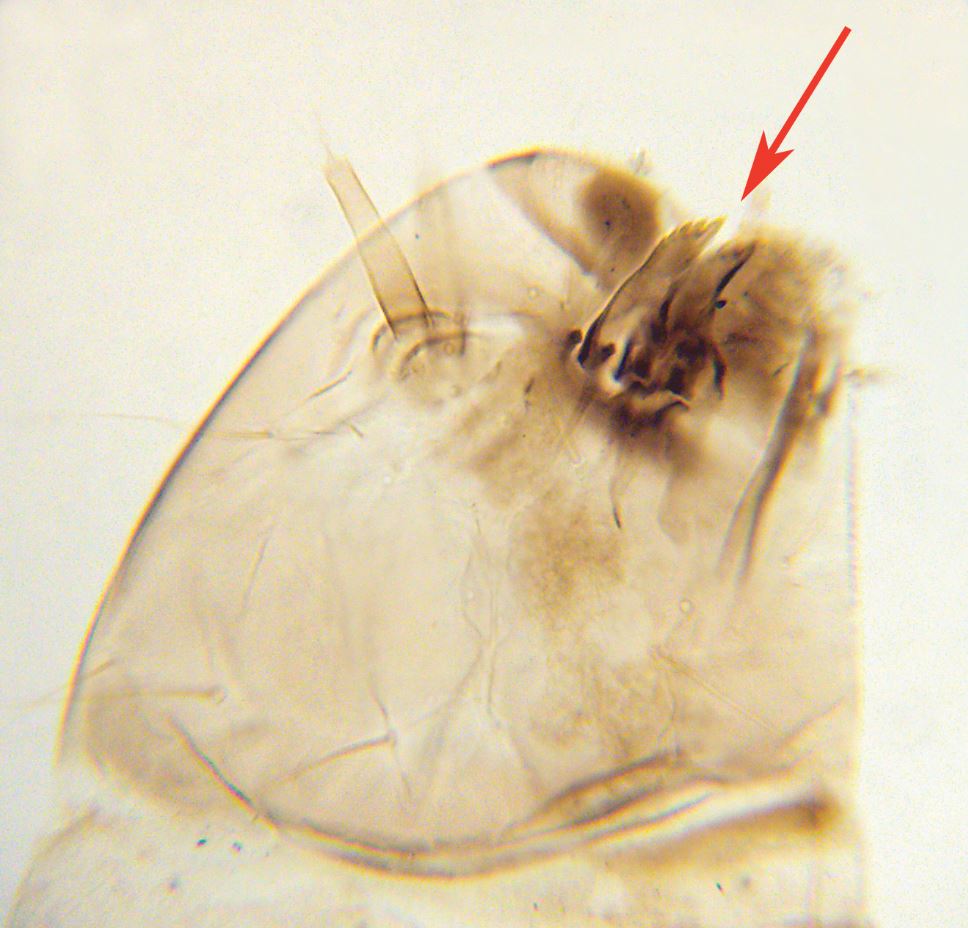Fleas
Being obligate ectoparasites on mammals and birds, adult fleas have become highly specialised in their morphology and life histories; as a consequence their affinities with other insect groups have long been debated.
Traditionally they have been linked with the Diptera or Mecoptera; recent morphological and molecular studies have suggested a close relationship with the family Boreidae within the Mecoptera.
Adult fleas, apart from being entirely wingless, have numerous morphological adaptations, including being strongly flattened laterally to creep between the hairs or feathers of their hosts; they have a very strong and dark cuticle which protects them from the grooming activities of the host; their long hind legs enable them to jump several centimetres from one host to another.
 Prepared specimen of Achaeopsylla erinacei Hedgehog flea Credit Peter Barnard
Prepared specimen of Achaeopsylla erinacei Hedgehog flea Credit Peter Barnard
Although generally small, from 1-6 mm long, fleas can cause great irritation when present in large numbers and they can also transmit several diseases, such as typhus and plague, as well as tapeworms. On a world scale around 95% of flea species are found on mammals, with the remainder on birds, but in Britain around 25% of the species are bird parasites.
Flea mouthparts are highly adapted to piercing their host skin and sucking blood; although they can live for a long time without feeding, a blood meal is usually essential to stimulate oogenesis and spermatogenesis.
 Prepared specimen of Pulex irritans Human flea Credit Peter Barnard
Prepared specimen of Pulex irritans Human flea Credit Peter BarnardEggs are laid in the host’s nest or sleeping quarters; the larvae hatch after a few days and rapidly feed on organic debris. Flea larvae are rather featureless, with no legs or eyes, though they have well-developed biting mandibles; they are difficult to identify, even to family level. When fully fed the larvae pupate within cocoons spun from silk, and the length of the pupal stage depends partly on temperature but also crucially on the detection of host activity. Flea pupae can remain dormant for months, but any vibrations in the substrate can trigger a rapid emergence of the adults so that they are immediately ready to infest new hosts.
 Microscope preparation of flea larva showing mandibles Credit Peter Barnard
Microscope preparation of flea larva showing mandibles Credit Peter BarnardMany species of fleas are highly specific on a narrow range of hosts and, like many other parasitic groups, they have been the subject of many studies on co-evolution. Because they rely on the nesting activity of their hosts, whether birds or mammals, they are not usually found on roaming mammals such as ungulates. Populations of fleas can be locally huge; over 5000 specimens have been recorded from a bird’s nest, and over 7000 from a single hedgehog.
Worldwide there are around 2,600 known species in 15 families; in Britain there are 62 species in 7 families.